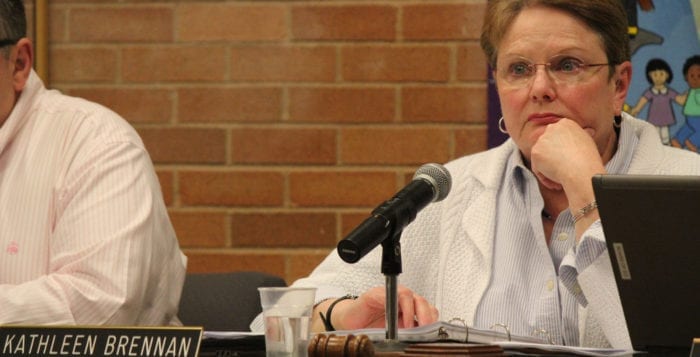
When Rebecca Taichman was a student at Earl L. Vandermeulen High School, starting in 1984, she felt lost. With a reputation since elementary school of being a bit of an oddball, she found it difficult, and unappealing, to fit in with the rest of the pack.
She was an outsider, she said, until her senior year when she took an acting class offered by Robert Krusemark, an English teacher at the time.
“I burst to life,” Taichman said in a phone interview. She was recently nominated for a Tony Award in the category of Best Direction of a Play for the critically lauded Broadway production, “Indecent.” The show is also nominated in the Best Play category. “I loved it [and] I really found myself there. Mr. Krusemark had a huge impact on me; he suggested that I apply to go to this Yale School of Drama summer program and because of him and that class, I did that.”
From that class, in which she recited monologues by playwrights like George Bernard Shaw, Taichman began her journey that has since seen her direct dozens of New York-based and regional plays, operas, and musicals. She has taught theater arts at NYU, MIT, and Yale and is among just five nominees in her category at the 71st Annual Tony Awards this Sunday, June 11, at Radio City Music Hall in New York City.
“It’s amazing and I’m really proud of her,” one of Taichman’s closest friends Cynthia Lee, a classmate in the Port Jefferson School District from first through 12th grade, said in a phone interview.
Laughing that she and Taichman felt like the offbeat kids in John Hughes’ movies while in high school, Lee recalled her friend’s sudden foray into theater.
“I was kind of surprised…I didn’t realize she had that bug in her and that was something she was going to pursue, [but] then she took off with it in college,” Lee said. “I can’t imagine her not going down that path.”
After graduating high school in 1988, Taichman became absorbed by all things theater, recognizing the art form as her true language.
“I can’t imagine her not going down that path.”
— Cynthia Lee
“I knew it was my vocabulary, that was very clear, I’m still not sure exactly why, but it was clearly my way of thinking,” she said.
It was at McGill University in Montreal, Quebec, Canada that she first dabbled outside of acting, taking part in casting, literary management, dramaturgy and eventually directing, cutting her teeth with a production of John Patrick Shanley’s “Danny and the Deep Blue Sea.”
“It was clear I was a better director than I was at any of the other things,” she said. “I was not a very good actor and as soon as I started directing, it was so clear I never would’ve cast me. That’s where I found my talent lay.”
Five years later, she ventured back to the Yale School of Drama, this time to pursue a Master of Fine Arts degree in directing.
Back at Yale, she discovered “The God of Vengeance,” a Yiddish play written by Sholem Asch in 1906, which would become the inspiration for “Indecent.” Taichman’s production is about the events surrounding the early Broadway productions of Asch’s controversial and landmark drama which depicts a brothel owner whose daughter falls in love with one of his prostitutes.
During the original run of Asch’s play in 1923, which featured the first kiss between two women on a Broadway stage, Taichman explained, most of the cast and crew were indicted and thrown in jail for “indecency” and “obscenity.”
“It took my breath away,” Taichman said of the original play by Asch, which she’d adapted as her thesis at Yale and been actively trying to do something more with since 1997.
“I was not a very good actor and as soon as I started directing, it was so clear I never would’ve cast me.”
— Rebecca Taichman
She eventually met and pitched the idea to Pulitzer-winning playwright Paula Vogel about seven years ago, and Vogel quickly got on board. Finding its legs at the Vineyard Theater in Union Square before racking up awards on Broadway, “Indecent” is a music-and-dance-filled yet powerful stroll through the decades as a group of actors perform “The God of Vengeance.”
“[It’s] ultimately a love letter to the theater and the power of making art in increasingly dangerous times…it’s an extremely important story, one about homophobia and anti-immigration, similar to what we’re experiencing now,” she said. “It’s quite special to be recognized for this particular piece, having thought about it for decades. People can apparently feel how deeply my heart is in it.”
Taichman’s sister Laura tried to put the Tony nomination into perspective.
“It’s so exciting and totally well-deserved — she has worked so hard, this play has been her baby for 20 years and it’s a heartening experience to watch this happen,” she said. “For the reception to be a Tony Award nomination rather than a conviction for obscenity feels just.”

















